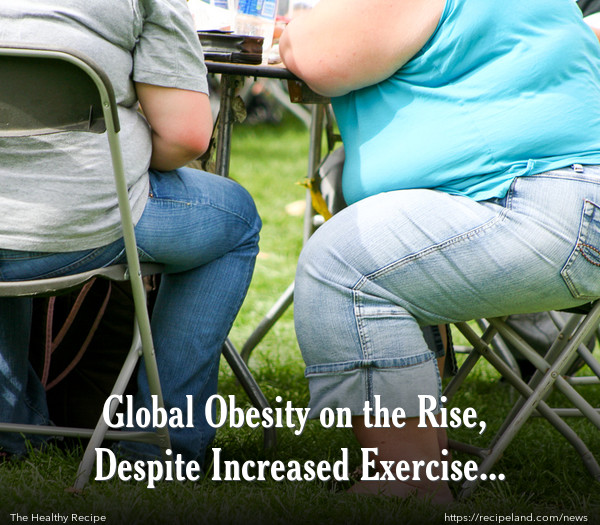A new study reveals that obesity continues to be on the rise, despite increased exercise rates. Experts around the world are studying the reasons behind the obesity epidemic, in an attempt to identify better strategies for slowing this very serious problem.
Obesity, along with other risk factors including poor nutrition, smoking and other unhealthy lifestyle habits, is causing the life expectancy of humans to decrease around the world. With obesity now ranking as the third biggest cause of death for those in the US, and also rising in other countries, more aggressive measures must be used to target the problem.
It has long been recommended that increased exercise will combat obesity, by improving the Body Mass Index (BMI), as well as keep a person’s weight in a healthier range, but recent studies have shown that, although more people are exercising regularly, obesity rates are still on the rise.
More than one third of Americans (37.5%) are considered to be obese, according to the Centers for Disease Control and Prevention (CDC). This is quite alarming, and the US is not alone in battling this problem. Other statistics reveal that, according to current rates, more than 80% of Australians will be considered obese by 2025.
Researchers have studied the contributing factors for obesity, and determined that poor food choices and portion control continue to have the greatest effect on a person’s weight. Many of those who do choose to exercise more regularly and increase their physical activity continue to make unhealthy choices about the foods they consume, and the amounts of those foods.
Additionally, other lifestyle choices, including smoking and alcohol use, add to the increasing obesity rates.
The available food supply is thought to be the main force behind the obesity epidemic around the world. It is true that exercise will help a person become healthier, but without other lifestyle changes—particularly related to food choices, the increased activity cannot address the overall health problems completely.
The average Australian diet is fraught with unhealthy fats, calories, sodium, preservatives and unnatural ingredients. Despite the introduction of more stringent labelling methods as an effort to make changes in food offerings, particularly in Australia and the UK, consumers continue to struggle with making healthier choices when shopping.
Critics point out that one of the major problems with promoting healthy choices lies in the pricing of food items, and that many of the less expensive foods that are available are among the least healthy, and also packaged in oversized portions.
They propose that policy makers should be focused on the marketing strategies that are used, and that public health should be a priority, with standardised portion control becoming a mandatory part of the industry and related regulations.
“So while physical activity will benefit the health of the population even if it is not accompanied by weight loss, physical activity will not address most of the burden of ill health caused by obesity. That is going to require a new focus on the root cause of the problem – (which is clearly related to diet),” says Professor Bruce Neal, Professor of Medicine at the University of Sydney and Senior Director at the George Institute for Global Health in Australia.
His suggestions to reform the food industry are consistent with many recent studies conducted worldwide. Efforts to change the behaviour and habits are going to be necessary in order to begin to reverse the ever growing problem with obesity, and it will be a large undertaking on a global scale.
SOURCES: https://www.cdc.gov/obesity/data/adult.html;https://www.ausfoodnews.com.au/2013
/07/17/physical-exercise-not-enough-to-slow-increasing-obesity-us-research-and-australian-response.html;https://www.reuters.com/article/2013/09/26/us-body-fat-idUSBRE98P12820130926;https://www.modi.monash.edu.au/obesity-facts-figures/obesity-in-australia/; Image courtesy of artur84 / FreeDigitalPhotos.net










Comments